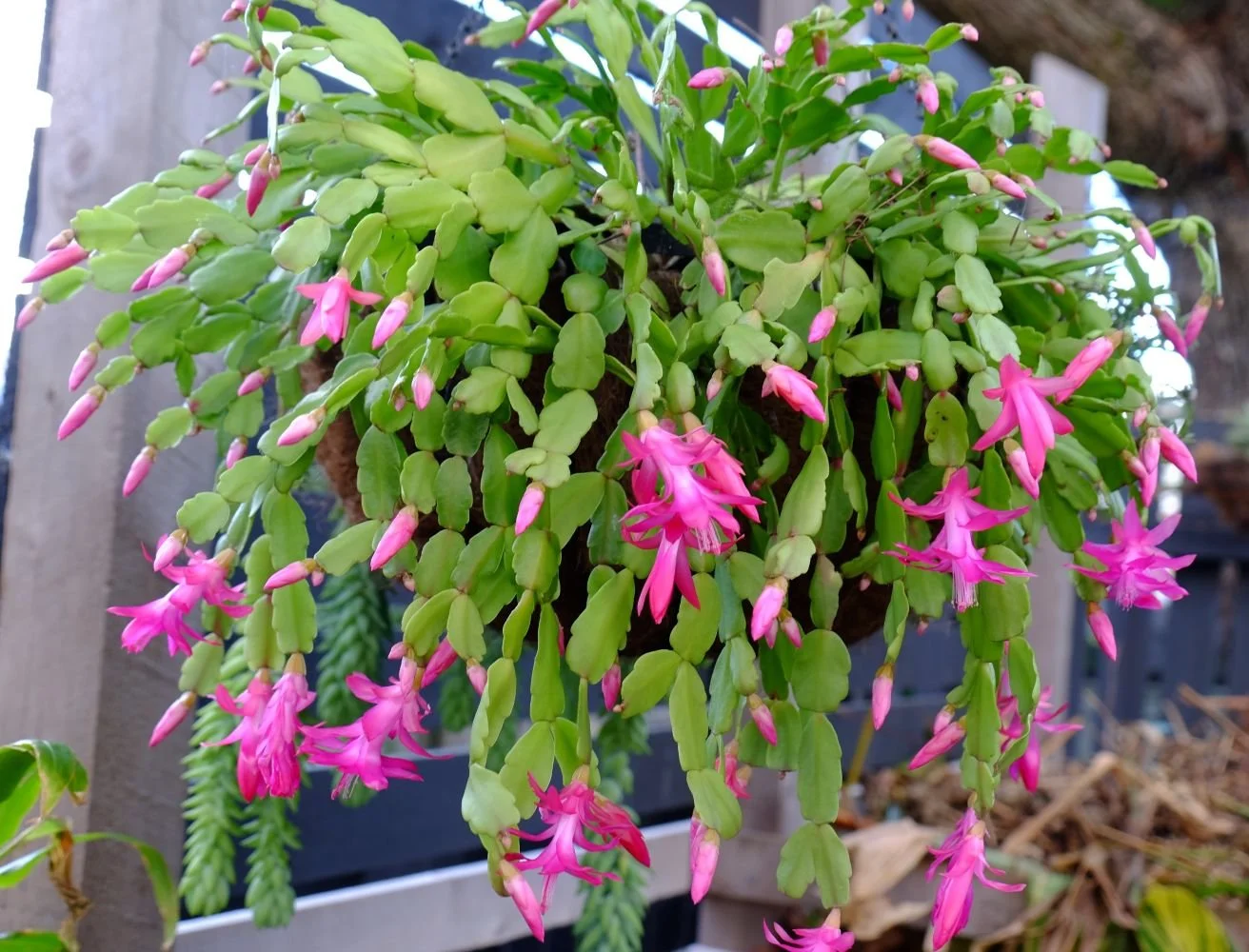Schlumbergera
Previously known as Zygocactus, Schlumbergera are a genus of flowering epiphytic (tree living!) cacti that come from the coastal mountains of South-East Brazil. You may know them as Christmas cactus or if you’re from the U.S., Thanksgiving cactus, depending on what time of year they bloom. Considering their ‘bloom schedule’ is related to the weather seasons, not the holiday season, it can be a little confusing. (I won’t start on the Easter cactus, that’s different again! It’s a Rhipsalidopsis).
The name Zygocactus comes from the fact the flowers are zygomorphic which means they only have one plane of symmetry - e.g. one side is a reflection of the other but the top isn’t the same as the bottom. The name Schlumbergera is after a possible Belgian guy who maybe lived in France and had a collection of them. Less exciting or informative, but slightly more fun to say.
Like most other genera in the Cactaceae family, Schlumbergera don’t have true leaves. The bit that looks like a leaf is still doing the photosynthesis but is actually a modified stem called a cladode. In other cacti, the spine is the modified leaf, but luckily Schlumbergera are spike free!
They are easy to grow and super easy to propagate (just break a bit off and plant). They are beautiful in hanging baskets and if you mimic the conditions where they naturally grow (high humidity, a bit of moisture and dappled sunlight) you’ll have no problems at all!


